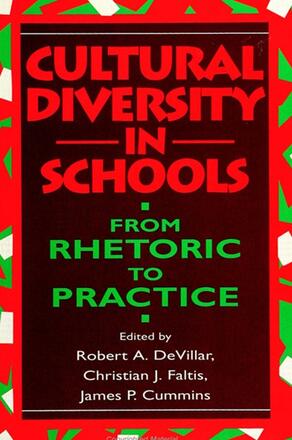
Cultural Diversity in Schools
From Rhetoric to Practice
Alternative formats available from:
Description
This book confronts the patterns of school failure often faced by subordinated minority groups in the United States. It does so by presenting a socioacademic framework that is based on the notion that all groups can have comparable access to quality schooling, comparable participation in the schooling, and derive comparable educational benefits from their participation. Organized around three key, interrelated components—communication, integration, and cooperation—the book combines theoretical concepts with actual classroom practices that support change. It moves us from a position of rhetoric about educational equality to one that actively addresses the socioacademic needs of students in a culturally diverse society.
Robert A. DeVillar is Associate Professor in the Department of Advanced Educational Studies at California State University, Bakersfield. Christian J. Faltis is Associate Professor in the Program in Multicultural Education at Arizona State University. DeVillar and Faltis are authors of Computers and Cultural Diversity: Restructuring for School Success also published by SUNY Press. James P. Cummins is Professor in the Department of Curriculum at The Ontario Institute for Studies in Education.
Reviews
"This work is an important and significant contribution to the field of education. The insightfulness of the editors and contributors lead us into the future, today. A future which may be difficult for some to understand and even more difficult to change; a future where communication, integration, and cooperation become fundamental organizing principles; a future where these principles can truly make school a successful context for culturally diverse students, their teachers, and communities. National and local educational goals cannot be reached if the perspective to reach those goals is not changed. This work provides us with a means to analyze, discuss, reflect, and generate a new vision for the 21st century. "—José S. Hernández, California Sate University San Bernardino